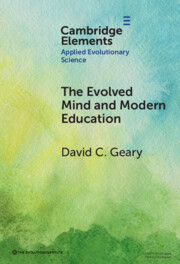Element contents
The Evolved Mind and Modern Education
Published online by Cambridge University Press: 12 March 2024
Summary
Keywords
- Type
- Element
- Information
- Online ISBN: 9781009454858Publisher: Cambridge University PressPrint publication: 23 May 2024
References
- 2
- Cited by



